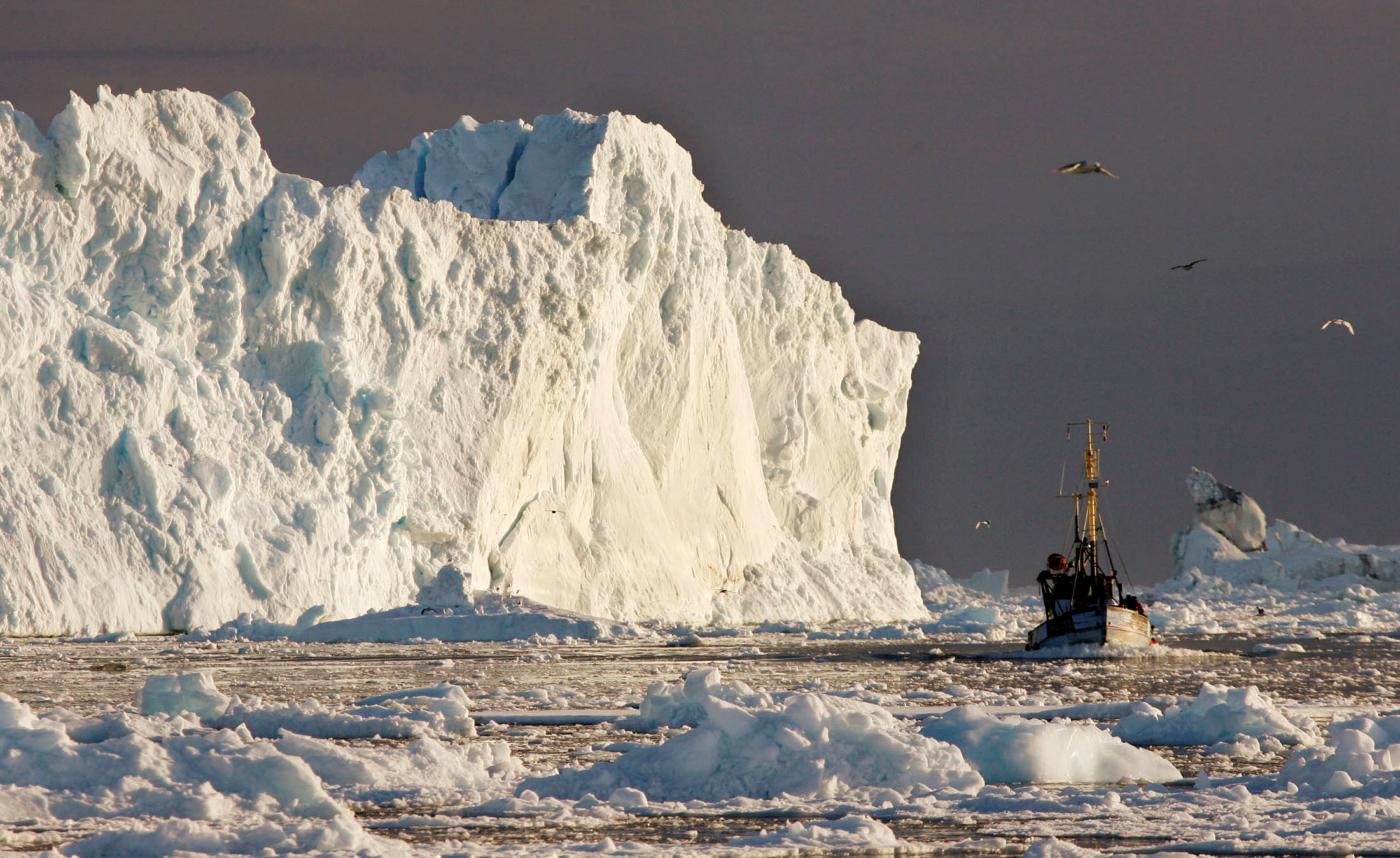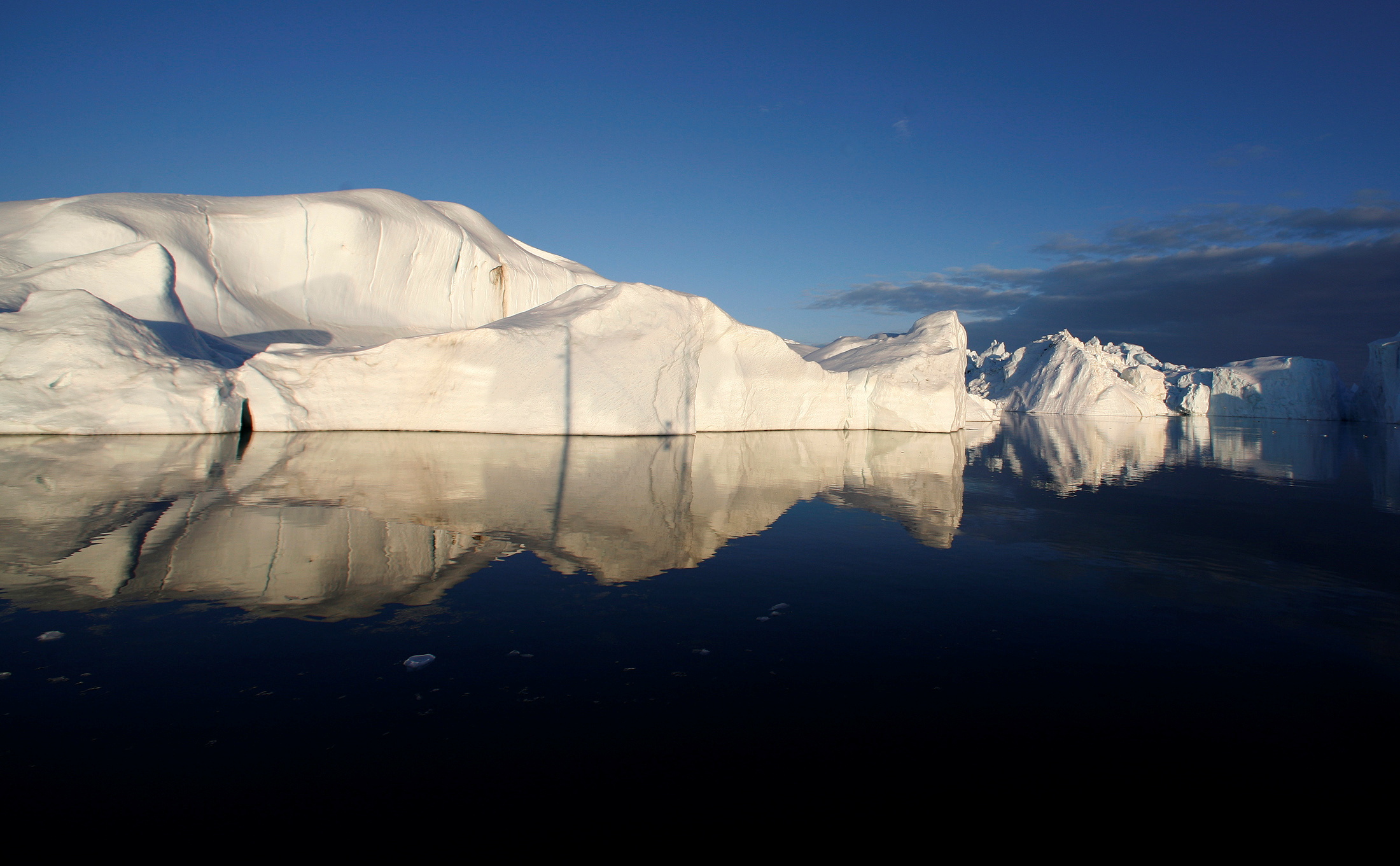Greenland ice melt may accelerate as glaciers get shorter, study finds
Meanwhile a second study found that changing snowfall patterns made the ice sheet darker — and more likely to absorb heat.

A swathe of the Greenland ice sheet may be nearing a “tipping point” into a new unstable state of melting that would be irreversible in the short term, scientists warn.
As the central-western Greenland ice sheet melts, it is also shrinking in height, with its surface exposed to warmer temperatures at lower altitudes that contributes further to melting, according to research published on Monday in the journal Proceedings of the National Academy of Sciences.
In a second study published Monday, a different group of researchers highlights how changing snowfall patterns over the Greenland may also cause the ice sheet to absorb more heat.
The two studies are among many in recent months to warn of the increasing rate of ice melt in the Arctic, where climate change is causing temperatures to rise much faster than in the rest of the world.
Greenland’s ice sheet — the world’s second largest after the Antarctic ice sheet — is estimated to contain enough water to raise the average sea level by more than 7 meters (23 feet). While it would take centuries for all of that to spill into the ocean under the worst-case scenario, scientists say it is crucial to slow that process by curbing greenhouse gas emissions now.
In examining the relationship between elevation and melt rate, researchers used computer simulations that included factors such as temperatures at sea level, ice melting rates, and ice sheet height. They found that the sheet could be approaching a critical threshold, where the elevation and temperatures at the surface accelerates melting.
“It’s a reasonable assessment,” said Andrew Shepherd, a polar climate scientist at the University of Leeds who was not involved in the research.
Shepherd noted that the relatively flat surface of Greenland’s central western ice sheet likely made it particularly sensitive to this feedback loop.
“If ice melting in Greenland can’t be reversed, then it’s the latest corner of our planet to be altered for good by global warming,” he said. “Our climate is sick and needs urgent care.”
Darker surface
Meanwhile, a second team examined how a recent high-pressure weather pattern known as “atmospheric blocking” was reducing snowfall for up to weeks at a time, leaving surface snow exposed to solar radiation for longer.
That can change the shape of snowflakes on the ground, making them darker and reducing their reflectivity or albedo, so they absorb more heat.
“It turns out the shape of the snow grains is really important for determining how reflective the ice sheet is,” said co-author Erich Osterberg, a climate scientist at Dartmouth College in Hanover, New Hampshire.
That paper, published in Geophysical Research Letters, drew on data collected over a 10-week snowmobile trek across 4,300 kilometers (2,700 miles) over two summers.
Osterberg said both studies showed how Greenland’s surface ice was sensitive to temperature. By contrast, Antarctica’s ice sheet is melting largely due to warming ocean water from below.

